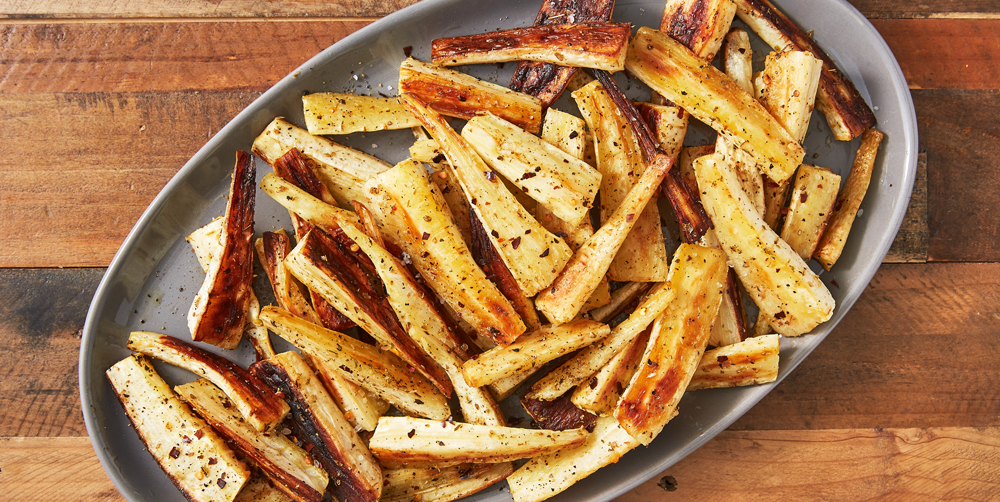Dec 15, 2020 Parsnips are a root vegetable similar to carrots, and they have a sweet, nutty flavor. They are off-white to pale yellow and are high in vitamin C. Parsnips can be cooked in various ways to release their tender, gentle sweetness and are. Mashed parsnips are full of much more flavor, slightly sweet, but the same great texture. And they are much healthier!
Parsnips are great cooked in soups, stews and casseroles. For example, parsnips are the perfect inclusion in my Slow Cooker Pot Roast Recipe. It’s best to add parsnips to soups and stews during the last 30 minutes so they can better retain their taste and texture. Parsnips can also be grated and eaten raw in salads. Parsnips are high in heart-healthy fiber, containing almost 5 grams in a 100-gram serving. The root vegetable is a low-fat food and provides 75 calories and 18 carbohydrates. Parsnips are high in several vitamins and minerals, including vitamin C, vitamin K, and manganese. Parsnips are a hardy, cool-season crop that is best harvested after a hard frost. Parsnips are not only tasty in soups and stews, but can also be enjoyed by themselves. Planting Dates for PARSNIPS Planting Dates for Spring.
Parsnips are one of those more mysterious vegetables that many have heard of but few can describe. This noble root vegetable looks like a carrot, but is often white, pale yellow, or very pale orange in color. Parsnips have a sweet, delicate flavor that is accentuated by certain cooking methods and flavor combinations.
Parsnips Recipes
Parsnips grow underground and typically should be planted in spring. The hardy root vegetable grows throughout the summer, preferring full sun or slightly shady conditions. Most experts recommend waiting until overnight temperatures become chilly. Because of this unique growing cycle, parsnips are often considered a winter vegetable and are frequently found as a component in rich vegetable soups and stews.


Like a carrot, a parsnip can be eaten raw, but yields wonderfully to some cooking methods. Excellent in soup, parsnips are also delicious when roasted and mashed with maple syrup or honey. Because the flavor is somewhat light, parsnips blend well with other delicate flavors. Parsnip, celery, and apple soup is a favorite winter recipe that makes good use of available produce and can be turned into a restorative broth or creamy and rich chowder. Parsnips also combine well with spices such as nutmeg and cinnamon.


For proponents of great food experimentation, consider surprising holiday guests with a homemade parsnip pie for desert. Cook parsnip roots until soft before mashing to the consistency of cooked pumpkin. Combine the vegetables with cream, two eggs, and salted butter and season with spices to taste. Pour the mixture into a pie crust and bake for 30-45 minutes, until slightly brown on top. As an alternative to plain old pumpkin pie, this parsnip variety is sure to wake up deadened holiday taste buds and lead to a few recipe requests.
Parsnips In Spanish

Best Way To Prepare Parsnips
People tired of lettuce and looking to maintain healthy eating habits while trying new foods would do well to pick up a parsnip or two at the grocery store. Low in fat and calories, parsnips are delightfully full of beneficial nutrients. Fiber, folic acid, and potassium all grace this carrot cousin with their nutritious presence.
Parsnips And Parsimony Youtube
Experts recommend cultivating parsnips in the garden or purchasing them at stores rather than harvesting wild specimens. Poison hemlock features roots that strongly resemble the pale parsnip, and can be deadly if eaten. In addition, a rare but painful condition called phytophotdermatitis can result from picking the vegetable, leading to skin burns, lesions, and sun sensitivity. Even when picking cultivated vegetables, some experts recommend wearing gloves.
